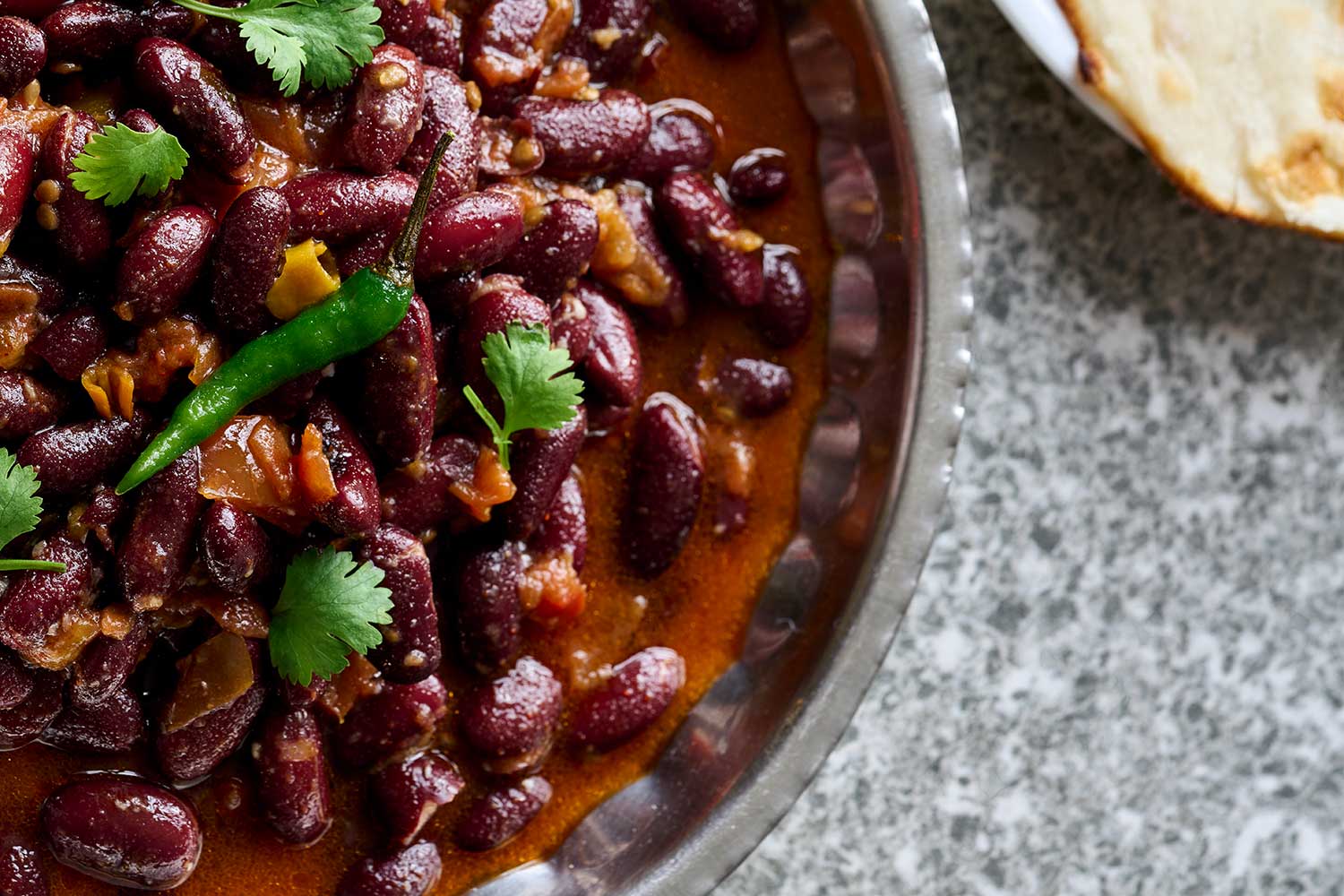This story is part of On Repeat, a series in which we ask top chefs, cookbook authors, and other famous foodies about the dishes they just can’t quit.
When Maryam Jillani moved to the U.S. from Islamabad for grad school, she noticed that folks tended to conflate Pakistani and Indian cuisine. She attributed this to a couple things: First was that Pakistani restaurants often served up Indian classics that Americans were familiar with, like butter chicken. Second, there wasn’t a cookbook here dedicated to exploring the culinary diversity of Pakistan—a country that shares borders not only with India but also with Iran, Afghanistan, and China.
So to write Pakistan, which comes out in late March, Jillani traveled all over the country, visiting 40 cooks in their kitchens. In Peshawar, the capital of the northwestern province of Khyber Pakhtunkhwa, she hit on something surprising. Despite the region’s meat-heavy eating style, she kept coming across a meatless dish she now makes On Repeat: red kidney beans with tomatoes. “It’s called lobia karahi, and it’s everywhere,” she says. “You can find it in food stalls on the roadside, and it’s a popular dish among college students.”
Why I love it
“It’s really satisfying, and it’s flavorful. If I want to prepare myself a very quick vegetarian meal and I have limited pantry items, I turn to this dish. It doesn’t require many ingredients and it comes together fairly quickly. It’s satisfying on its own or with a side of roti or rice, and it pairs really well with other Pakistani dishes. It’s a very straightforward, easy, and forgiving dish. It’s kind of a lifesaver for me.”
What I’ve changed
“The recipe in the book is minimally spiced with some garlic, salt, red chili powder, and green chili. If I want to dial up the flavor I might add some cumin powder and coriander powder and dust it with garam masala powder towards the end.
“In Pakistan we always use dried beans, and the way kitchens are set up is you always presoak them and boil them. But in this case I found that the canned beans work just as well. If I have limited time, I just use a canned version. I’ve also used white canned beans.”
What else I’m into right now
- Playing with dals. My family eats dal three times a week, and I make a mix. I make masoor, which is red lentils, and whole masoor dal, which is black,and mung dal, which is yellow. I can easily switch up the flavor profile by adding curry leaves, sliced onions, green chilis, and playing around with tadka, which is [the technique] when you temper spices in oil. So that’s a good way of having lentils multiple times a week, but they all taste different.
- Chutney to the rescue. If I’m ever worried about cilantro going bad or mint going bad, I like to fold them into various chutneys. The one I make most is the cilantro and mint chutney: I put a bunch in the food processor with a handful of ingredients like garlic, lemon juice, and red chili flakes. The chutney is quite versatile and it adds a little bit of heat and brightness to your food.
- Herb longevity. In terms of keeping herbs fresh, once you put your herbs in a glass jar with a little water, if you cover it with a ziplock and put a hair tie on it you create a seal, and they last a lot longer. [Editor’s note: Also check out this handy cheat sheet, which features this (and many other) tricks to extend the life of your produce.]

